Imagine empowering your child to see challenges as opportunities for growth. This mindset can unlock their full abilities and prepare them for success. Studies show that a growth mindset greatly improves a child’s school performance and happiness. It’s key for their development and success in school.
Learning about a growth mindset and its benefits can guide you. You’ll find ways to nurture this mindset in your child. This includes encouraging a love for learning and teaching them to think positively about themselves. By doing so, your child will be more ready to face challenges and grow.
Key Takeaways
- Encouraging a growth mindset in school-aged children can have a significant impact on their academic performance and overall well-being
- Mindset development is a key part of educational growth strategies
- By fostering a growth mindset, you can help your child become more resilient and motivated
- Practical advice and strategies can help you encourage a growth mindset in your child
- Educational growth strategies can help your child thrive in school and beyond
- Encouraging a growth mindset can help your child develop a love of learning and a positive self-image
Understanding the Growth Mindset Concept
Exploring mindset development, you’ll find a growth mindset is key to unlocking your child’s full abilities. Carol Dweck, a famous psychologist, introduced this idea. She showed that abilities and intelligence grow with effort and hard work.
A growth mindset is vital for cognitive skills development. It helps your child face challenges and keep going, even when it’s tough. This builds their confidence and love for learning. It also boosts their grades and helps them handle setbacks better.
Some key traits of a growth mindset are:
- A willingness to take on new challenges
- A focus on progress, not perfection
- A belief that abilities grow with effort and learning
Knowing about growth and fixed mindsets helps you support your child. With mindset development and positive reinforcement, they can grow in confidence and skills. This prepares them for success in life.
The Impact of Mindset on Academic Performance
Exploring growth mindset is key to understanding its effect on school success. Studies show that students with a growth mindset do better in school. They also handle challenges better because they see failures as chances to learn.
Boosting student motivation is vital for success in school. When students believe they can improve, they work harder and tackle tough tasks. This makes them more focused and efficient in their studies.
Some main benefits of a growth mindset for students are:
- Improved academic performance
- Increased resilience in the face of challenges
- Enhanced student motivation and engagement

Knowing how mindset affects school success helps you support your child. Encouraging a growth mindset can greatly benefit their academic journey. It boosts academic resilience, student motivation, and promoting learning efficiency.
Creating a Supportive Learning Environment
To help your child feel more comfortable taking risks, it’s key to create a supportive learning space. This space should help your child bounce back from setbacks. By using educational growth strategies, your child can develop the skills needed for success.
A supportive learning environment includes organized physical space, emotional safety, and open communication. Organizing the space helps your child stay focused. Emotional safety lets them share their thoughts and feelings freely. Open communication builds trust and encourages them to ask questions.
Here are some tips for creating a supportive learning environment:
- Encourage open communication by listening to your child’s thoughts and feelings
- Organize the physical space to promote focus and engagement
- Foster emotional safety by creating a comfortable and supportive atmosphere
By following these tips and using educational growth strategies, you can help your child succeed. Always focus on fostering resilience and creating a supportive learning environment.
This way, you’ll help your child develop a growth mindset and reach their full capacity.
| Element | Importance | Tips |
|---|---|---|
| Physical Space Organization | High | Organize the space to promote focus and engagement |
| Emotional Safety | High | Create a comfortable and supportive atmosphere |
| Open Communication | High | Encourage open communication by listening to your child’s thoughts and feelings |
Effective Praise and Feedback Techniques
Positive reinforcement is key in helping children grow. Constructive feedback boosts their sense of achievement and motivates them to try new things. Studies show that good praise and feedback greatly improve a child’s motivation and self-confidence, helping them learn better.
To praise effectively, highlight specific good points in your child’s work or actions. This could be their hard work, never giving up, or making progress. This way, they know what they did right and what they can get better at, which is important for student motivation. Here are some effective praise and feedback strategies:
- Be specific and sincere in your praise.
- Focus on the effort, not just the result.
- Give feedback that is timely and helpful.
Using these strategies daily can help your child grow and do better in school. The aim is to promote learning efficiency and give them the courage to face new challenges.
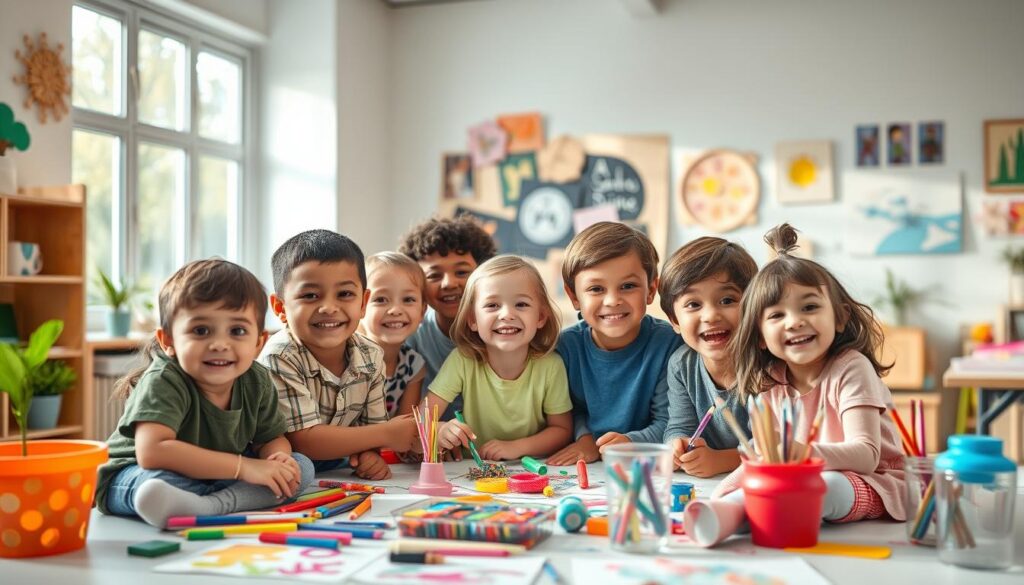
Remember, every child is different, and what works for one might not work for another. Be patient, consistent, and true in your approach. This will help your child develop the skills and mindset needed to succeed.
Teaching Problem-Solving Strategies
As a parent or teacher, you’re key in helping kids grow their thinking skills. Teaching them how to solve problems makes them more confident. This confidence helps them handle challenges better and bounce back from failures.
Breaking down big tasks into smaller steps is important. This helps kids think critically and find creative solutions. Ask open-ended questions, guide without giving answers, and give feedback that helps them learn.
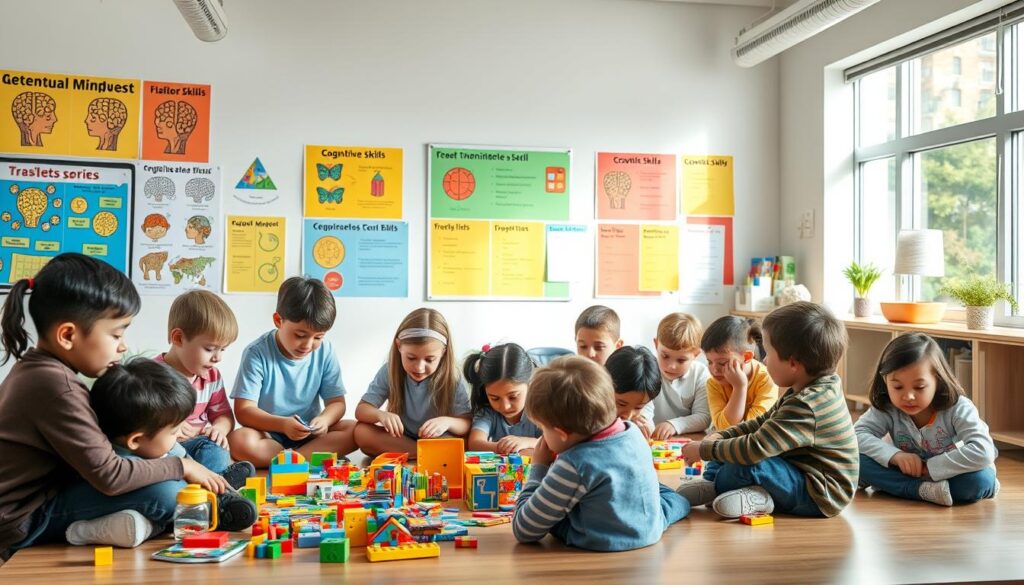
- Encouraging children to think critically and approach problems from different angles
- Providing opportunities for children to practice problem-solving in a supportive environment
- Modeling problem-solving behaviors and sharing your thought process with children
Using these strategies in your teaching helps kids develop important skills. These skills are essential for success in school and life.
Handling Failure and Setbacks Constructively
Teaching kids to handle failure well is key to building resilience. You want them to see failure as a chance to learn, not as a reason to give up. By showing them how to deal with setbacks, you help them grow and do better in school.
Studies show that kids who handle failure well are more resilient and motivated. They focus on the journey, not just the end result. For instance, they might say “I learned something new” instead of “I failed.” This mindset boosts academic resilience and student motivation, vital for success.
Here are some ways to help your child handle failure and setbacks constructively:
- Encourage them to view failure as a learning opportunity
- Help them to identify what went wrong and how they can improve next time
- Praise their efforts, not just their results
- Teach them to focus on the process, not the outcome

By using these strategies, you can help your child grow and handle setbacks better. This will help them become more resilient and reach their goals in school and life.
| Strategy | Benefits |
|---|---|
| Encourage a growth mindset | Improved academic performance, increased motivation |
| Teach coping skills | Improved emotional regulation, reduced stress |
| Praise effort, not just results | Increased self-esteem, improved resilience |
Encouraging a Growth Mindset in School-Aged Children Through Daily Activities
As a parent or educator, you have a big role in shaping school-aged children’s mindset. By adding educational growth strategies to daily life, you can help them grow and learn better. It’s important to make learning efficient in today’s fast world. This can be done through school work, extra activities, and learning at home.
To help children grow, give them chances to take risks and learn from mistakes. Encourage them to think critically and solve problems creatively. You can do this with puzzles, brain teasers, and science experiments. Also, praise their effort and give feedback that helps them get better.
Here are some daily activities that can help promote a growth mindset in school-aged children:
- Academic exercises, such as math problems or reading comprehension, that challenge children to think critically and develop problem-solving skills
- Extra-curricular activities, such as sports or music, that promote teamwork, discipline, and perseverance
- Home-based learning opportunities, such as science projects or cooking, that encourage children to explore and learn through hands-on experiences
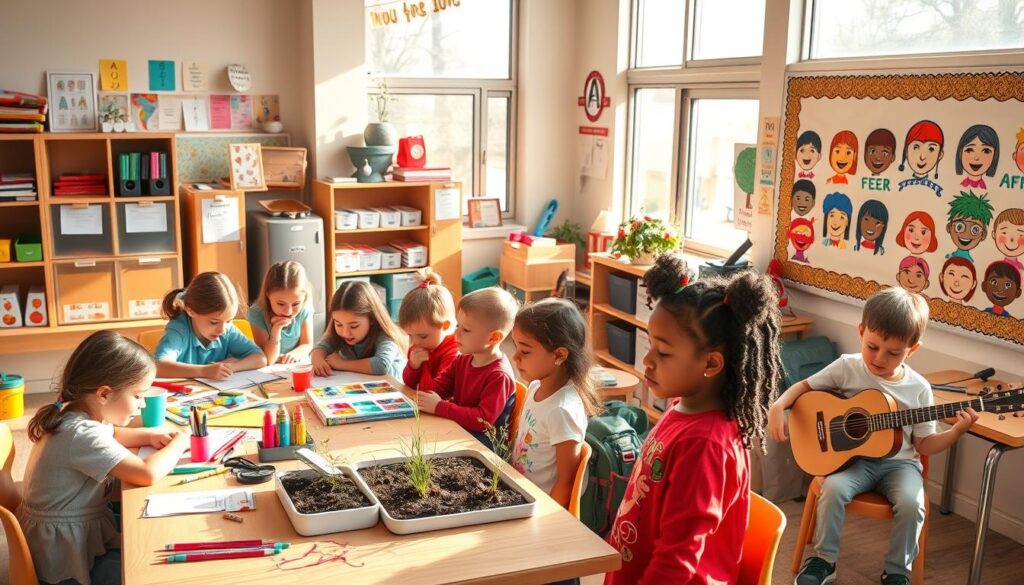
By adding these activities to daily routines, you can help children grow and learn better. This will make them more efficient learners and set them up for success in the future.
| Activity | Benefits |
|---|---|
| Academic exercises | Develops problem-solving skills, critical thinking, and cognitive skills development |
| Extra-curricular activities | Promotes teamwork, discipline, and perseverance, while fostering a growth mindset |
| Home-based learning opportunities | Encourages hands-on learning, exploration, and creativity, while promoting learning efficiency |
Building Resilience and Persistence
As a parent, you have a big role in fostering resilience in your child. This helps them learn to face challenges and stay motivated. Studies show that academic resilience is key for success and happiness.
To boost resilience and persistence, it’s important to encourage student motivation. You can do this by setting achievable goals, giving positive feedback, and celebrating small wins. This helps your child grow and do better in school.
Here are some ways to build resilience and persistence:
- Encourage your child to take risks and see failures as chances to learn.
- Show resilience yourself, as kids often learn from what they see.
- Give your child chances to solve problems and think critically.
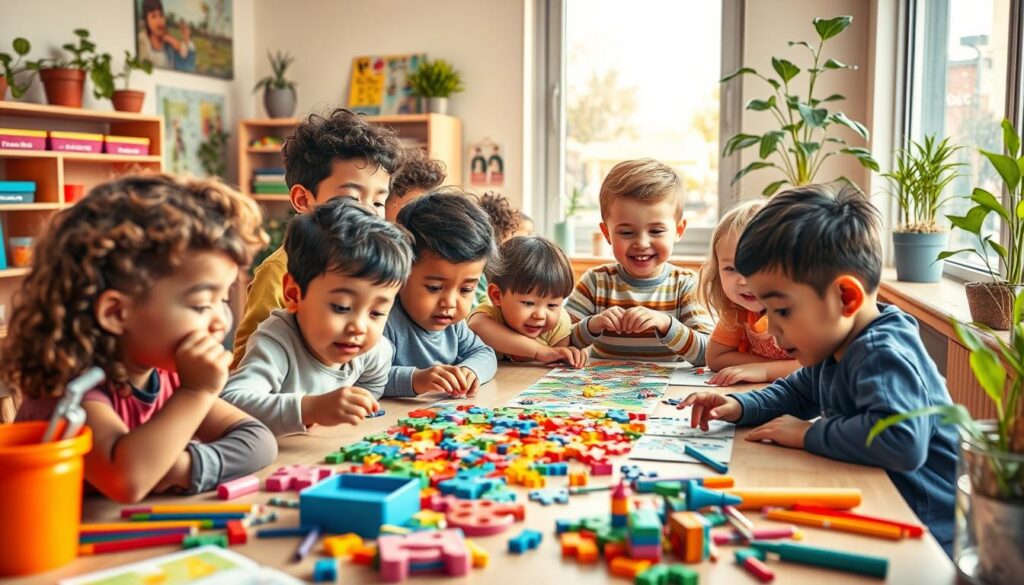
Using these strategies can help your child become more resilient and persistent. Remember, building these traits takes time and effort. But the benefits are huge.
Measuring Progress and Celebrating Growth
Starting to improve your child’s learning and thinking skills is exciting. It’s key to track their progress and celebrate their growth. This keeps them motivated and interested in learning. Using strategies that focus on tracking and celebrating can really help your child grow.
First, set goals with your child that are realistic. Break big goals into smaller, easier ones. This way, you can see where they need help and give them the right support. Good ways to recognize their efforts include:
- Creating a progress chart or graph to visualize growth
- Setting aside dedicated time to review and discuss progress
- Offering positive reinforcement and encouragement
Using these methods in your child’s learning plan helps a lot. Remember, it’s about progress, not being perfect. 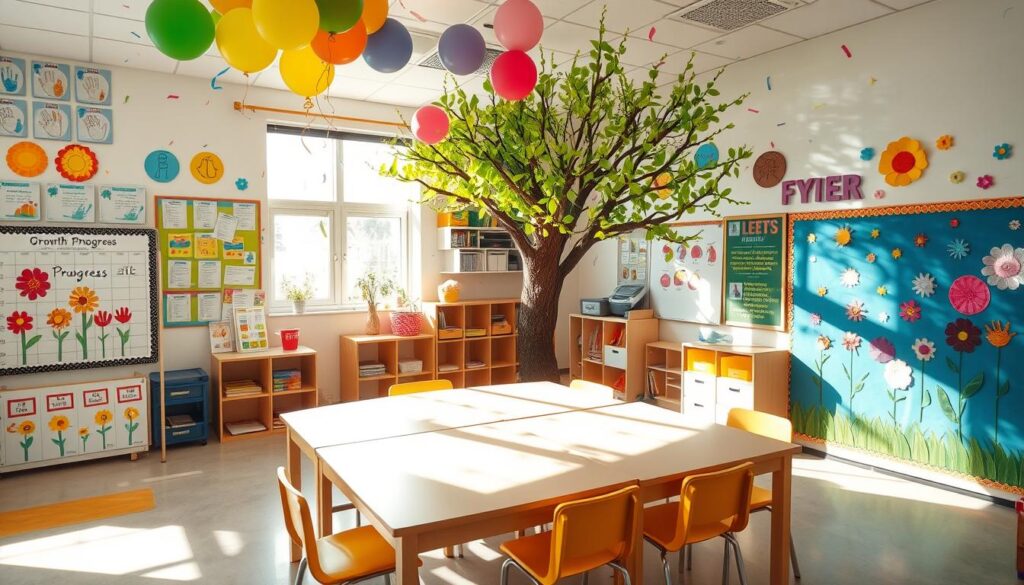
Every small step your child takes is a big deal. By focusing on their growth, you’re helping them build a strong base for learning and success.
Working with Teachers and School Staff
As a parent, you have a big role in your child’s education. But you’re not alone. Teachers and school staff can be great partners in helping your child grow. Together, you can teach your child important educational growth strategies for their whole school life.
Start by talking often with your child’s teachers. Share updates on your child’s progress and talk about their strengths and challenges. This way, you and the teachers can help your child become more academically resilient.
Here are some ways to work with teachers and school staff:
- Go to parent-teacher conferences to talk about your child’s progress and goals.
- Help out in the classroom or school to see where your child learns.
- Join in school events and activities to show you care about your child’s education.
By teaming up with teachers and school staff, you can help your child grow in many ways. Always be open to working together. This will help your child reach their highest goals.
Conclusion: Nurturing Lifelong Learners Through Growth Mindset
Fostering a growth mindset in kids is key for raising lifelong learners. These learners are resilient, motivated, and ready for challenges. By using the strategies shared, you can help your child love learning, keep trying when it’s hard, and see failures as chances to grow.
Developing a growth mindset is a journey, not a finish line. It needs ongoing effort, positive support, and seeing failures as learning moments. Encourage your child to set realistic goals, follow their progress, and celebrate their achievements, big or small.
By supporting a growth mindset, you help your child succeed in school and in life. This approach helps them grow into confident, adaptable, and curious individuals. Embrace this journey and watch your child become a lifelong learner ready to achieve their dreams.
